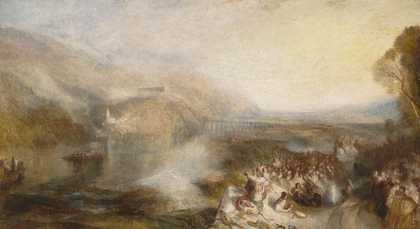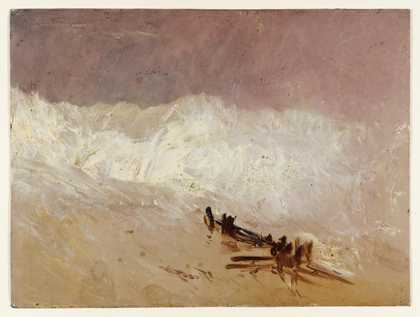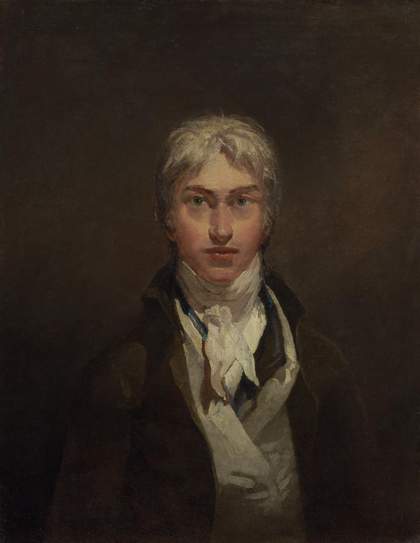Observe how Turner took advantage of the conveniences of modern travel to explore new climates and coloursÂ
Turner first travelled outside Britain, in France and Switzerland, aged twenty-seven in the summer of 1802. Between 1817 and 1845 he explored France, Belgium, Holland, Germany, Luxembourg, Denmark, Bohemia (now the Czech Republic), Switzerland and, of course, Italy. While his travels were extensive, they were confined to Europe, unlike those of contemporaries who ventured to Egypt, Spain or British colonies in Asia and Australia.
The conveniences of modern travel were still in their infancy. Often Turner journeyed on foot or by horse-drawn coach, with sketchbooks and drawing materials as his main baggage. It was only during the latter half of his working life that steam power was introduced, greatly reducing travel times.
When he landed in Calais in 1802 he had already been travelling for several days since leaving London. By the 1830s he could board a steamboat near London Bridge and be in France, Belgium or Holland in a few hours.
Turner’s later European travels allowed him to source material for a new generation of sumptuously illustrated travel books. They also provided subjects for pictures. Venetian scenes tapped into the city’s popularity with British tourists while interest in Germany grew following Queen Victoria’s marriage to Prince Albert in 1840.



